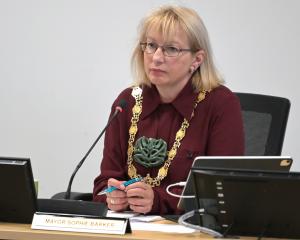New Zealand appears to have dug itself in to a hole over how to help slow the effects of human-induced climate change. This view was accentuated by the Government's recent decision not sign the second stage of the Kyoto Protocol, an agreement which commits nations to reduce greenhouse gas emissions.
Critics have claimed we are abandoning ship when the going gets tough, but, in reality, the agreement is largely symbolic and ineffective. The planet's big emitters - United States, China and India and other non-signatories which are cumulatively responsible for 85% of the world's emissions - are not in the protocol. Without those countries actively countering greenhouse gas emissions there is little hope of curbing climate change.
This week, representatives from 200 countries are meeting in the Qatar capital, Doha, to renew the Kyoto Protocol which expires this year. New Zealand has decided to join the alternative United Nations Framework Convention on Climate Change, along with the world's big emitters.
Of some concern to the Key Government is Australia and Europe have stayed with the protocol, but this will place an even greater emphasis on the details of the Government's plan next year to set and achieve binding greenhouse gas emission targets.
Mr Key has reportedly said he wanted a change to rules that govern the protocol, especially around land use, and he has reiterated New Zealand would not be a world leader on this issue.
New Zealand contributes about 0.2% of global greenhouse gas emissions, but it could be argued that the protocol makes little sense for New Zealand as there is virtually no way to curb the source of half our emissions, methane from livestock, other than to not farm animals which would be economic suicide.
So, it is no great surprise we are exceeding our emissions target by 18%.
But that does not mean we should shirk our international responsibilities to slow climate change. The key will be how our new United Nations Framework Convention on Climate Change partners reduce greenhouse gas production and whether those targets are binding and achievable.
The Government cannot afford to hamstring an already stuttering economy as addressing our environmental issues requires money-hungry research and technology. It is hard to be green when financially you are in the red.
On this measure the Government could encourage the economy to grow, risk increasing greenhouse gas production but generate income for investment in research and technology or, as some advocate, tax carbon emissions and risk restricting the productive sector's ability to generate income.
The emissions trading scheme (ETS) has been central to New Zealand climate change policy since its launch in 2008, and appears it will remain so. This puts a price on carbon to encourage emitters to reduce emissions.
Those who exceed limits can offset some of that liability by buying equivalent units from those who have units to sell or offset by buying units from owners of carbon absorbing forests.
In a quirk peculiar to the ETS, despite not meeting our emissions target, offsetting means we have a net global asset worth $199 million, but this belies a niggling issue.
Forest owners thought they were on to a financial winner with the ETS by selling carbon absorbing rights of their trees, but not only has the international price of carbon plummeted from $20 a tonne last year to around $5 today, greenhouse gas emitters have been able to buy cheaper units from overseas forest owners, bypassing local foresters.
While an international agreement to address greenhouse gas emissions is desirable, the reality is that achieving an agreed global plan of action is difficult. Supporters - New Zealand included - of the United Nations Framework Convention on Climate Change, now have to show they have a credible alternative to the Kyoto Protocol, that will not only match its emission reduction targets, but address other issues around binding compliance.












